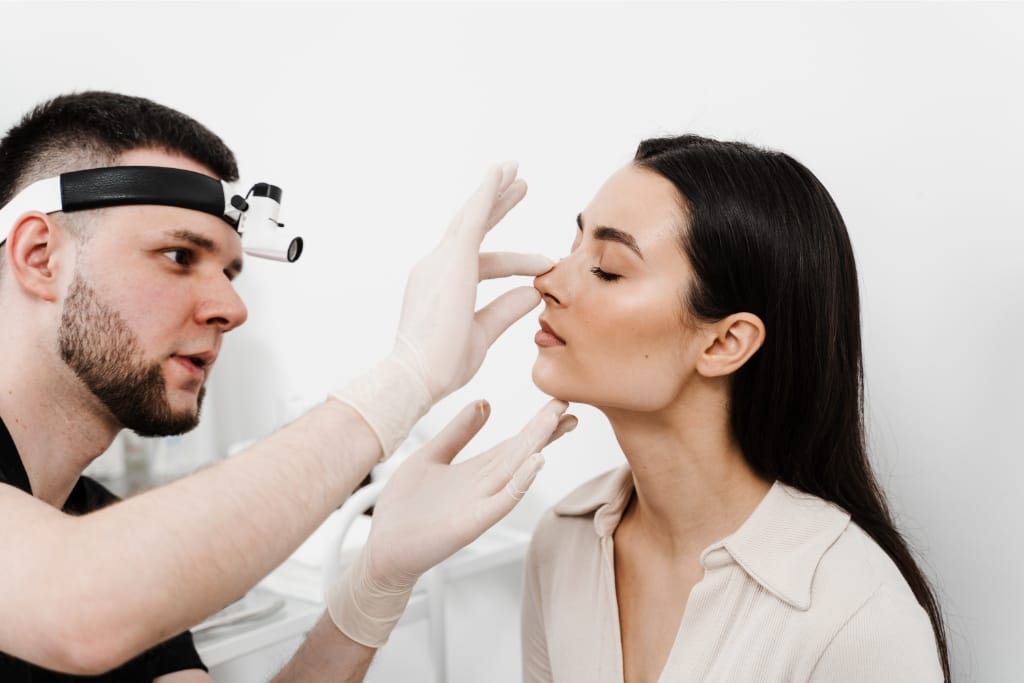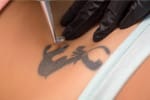Rhinoplasty, commonly referred to as a nose job, is often perceived as solely a cosmetic procedure.
However, for many individuals, it serves a functional purpose essential to their overall well-being.
Whether to correct breathing difficulties, repair structural abnormalities, or address injuries, rhinoplasty can be a medically necessary solution.
Certain health conditions might make this surgery crucial for improving quality of life, leading to concerns about affordability and insurance coverage.
Understanding when rhinoplasty might qualify for insurance can provide clarity and reassurance for those considering this important surgery.
Let's explore the key factors that could determine whether your rhinoplasty might be covered.
1)) Correcting A Deviated Septum
A deviated septum occurs when the wall dividing the nasal passages is misaligned, causing one side of the nasal cavity to be smaller than the other.
This condition can lead to significant breathing difficulties, particularly through one nostril, and may also contribute to chronic sinus infections, nosebleeds, and sleep disturbances, such as snoring or sleep apnea.
For individuals experiencing these issues, correcting a deviated septum through rhinoplasty can provide substantial relief by improving airflow and restoring proper nasal function.
Given the impact this condition can have on daily life and health, insurance companies may consider correcting a deviated septum medically necessary if the symptoms are documented and severe enough to warrant surgical intervention.
Consulting with a specialist to confirm the extent of the deviation and its effects is an important step toward achieving better health and possibly securing coverage for the procedure.
2)) Repairing Nasal Fractures
Nasal fractures, commonly caused by trauma such as falls, sports injuries, or accidents, are one of the most frequent types of facial fractures.
A broken nose can result in structural damage, including misalignment, deformity, and impaired nasal function, which may lead to chronic breathing difficulties or recurrent sinus issues if left untreated.
Visible damage to the nose’s appearance can affect self-confidence and emotional well-being.
Rhinoplasty offers a way to repair nasal fractures by restoring the nose's proper alignment, functionality, and aesthetic appearance.
When the injury significantly impacts breathing or daily life, insurance providers may recognize the repair of nasal fractures as medically essential, particularly if prompt medical documentation supports the need for surgical intervention.
Seeking an evaluation from a qualified surgeon is essential to assess the extent of the injury and develop a treatment plan tailored to the individual’s needs, with the possibility of obtaining insurance coverage for the procedure.
3)) Resolving Breathing Issues
Breathing issues stemming from nasal obstructions can severely impact a person’s quality of life, leading to chronic discomfort and various health complications.
Conditions such as nasal valve collapse, enlarged turbinates, or other structural abnormalities often block airflow, making it difficult to breathe properly through the nose.
This can result in frequent headaches, disrupted sleep, fatigue, and even reduced oxygen intake during physical activities.
Rhinoplasty can address these issues by surgically correcting the anatomical problems causing the obstruction, significantly improving airflow and nasal function.
For patients suffering from breathing difficulties documented as severe and persistent, insurance providers may classify this procedure as medically necessary.
Receiving an evaluation from an experienced surgeon who can document these breathing impairments and recommend a surgical solution is a critical step toward relieving symptoms and potentially securing insurance coverage for the reconstruction.
4)) Treating Sleep Apnea
Sleep apnea is a serious condition characterized by repeated interruptions in breathing during sleep, often caused by obstructions in the nasal and airway passages.
These interruptions can lead to poor sleep quality, excessive daytime fatigue, and more severe health consequences such as high blood pressure, cardiovascular issues, and an increased risk of stroke.
Rhinoplasty aimed at addressing structural nasal problems, such as a deviated septum, enlarged turbinates, or nasal valve collapse, can play a vital role in treating sleep apnea by improving airflow and reducing airway obstructions.
For individuals with documented sleep apnea where nasal deformities significantly contribute to the condition, insurance providers may deem the surgical intervention medically necessary.
Proper evaluation by a sleep specialist and ENT surgeon is critical in demonstrating how targeted corrections through rhinoplasty can alleviate symptoms and support better overall health while offering a pathway to potential insurance coverage.
5)) Addressing Congenital Defects
Congenital defects, such as cleft palate, nasal deformities, or underdeveloped nasal structures, can pose significant challenges for individuals from birth, both functionally and aesthetically.
These issues can lead to difficulties with breathing, feeding, speech development, and social interactions, profoundly affecting the overall quality of life.
Rhinoplasty can play a crucial role in addressing these congenital problems by surgically reshaping and reconstructing the nose to enhance both function and appearance.
For individuals with documented congenital nasal defects, these surgical interventions may be considered medically essential to correct abnormalities that impair normal nasal function.
Insurance providers are often more likely to cover procedures targeting congenital defects, provided there is substantial evidence of medical necessity.
Consulting with a skilled surgeon who specializes in reconstructive procedures is essential to developing an effective treatment plan that improves physical health, functionality, and confidence while navigating the process of securing insurance approval.
6)) Post-Trauma Reconstruction
Traumatic injuries to the nose, caused by accidents, physical assaults, or other significant impacts, can lead to severe damage that affects both form and function.
Post-trauma reconstruction is a vital procedure to correct issues such as structural deformities, misaligned nasal bones, or soft tissue damage resulting from these incidents.
Beyond aesthetic concerns, untreated trauma can impair breathing, cause chronic discomfort, and lead to further complications such as recurrent infections or sinus problems.
Rhinoplasty for post-trauma reconstruction focuses on restoring the nose to its pre-injury state by repairing damaged structures, improving airflow, and enhancing the overall appearance.
When trauma causes significant functional impairment or aesthetic distress, insurance providers may classify the procedure as medically necessary, especially if timely and comprehensive medical documentation supports its necessity.
Partnering with a highly qualified surgeon experienced in reconstructive techniques is crucial for patients seeking to regain nasal functionality, improve breathing, and restore a sense of normalcy following a traumatic injury.
7)) Resolving Functional Impairments
Functional impairments of the nose, such as chronic nasal congestion, difficulty breathing, or structural deformities, can significantly detract from a person’s physical well-being and quality of life.
These issues may arise from conditions like a deviated septum, nasal valve collapse, or enlarged turbinates, all of which can restrict airflow and disrupt essential respiratory functions.
Rhinoplasty designed to address functional impairments aims to restore proper nasal function by correcting the anatomical elements causing these obstructions.
This type of surgery often entails realigning the septum, repairing collapsed cartilage, or reducing the size of turbinates to improve airflow.
Many patients experience a dramatic relief in symptoms, including improved breathing, better sleep quality, and enhanced ability to engage in activities requiring physical exertion.
With thorough documentation of the functional impairments and their impact on daily life, insurance providers may determine such procedures medically necessary, helping alleviate the cost burden for patients.
Consulting with a skilled specialist is integral to creating a customized surgical plan that addresses the root cause of the impairments and delivers meaningful, long-lasting improvements in both function and comfort.
Conclusion
Rhinoplasty is far more than a cosmetic procedure—it provides meaningful solutions to a wide range of medical and functional concerns, profoundly improving the lives of countless individuals.
From addressing congenital defects and resolving traumatic injuries to alleviating sleep apnea and functional impairments, these procedures serve not only to enhance aesthetics but also to restore vital nasal functions essential for overall health and well-being.
The benefits extend beyond physical improvements, often boosting mental health and confidence, enabling individuals to fully engage with their daily lives and social interactions.
For many, the potential for insurance coverage, when supported by strong medical evidence, removes a significant barrier to accessing much-needed care.
By partnering with highly skilled surgeons who specialize in specific areas of rhinoplasty, patients can achieve outcomes tailored to their unique needs and circumstances.
These life-enhancing interventions highlight the importance of viewing rhinoplasty as an essential tool in addressing diverse medical conditions, further emphasizing its critical role in promoting a healthier, happier, and more functional life.
Download Our Free E-book!








